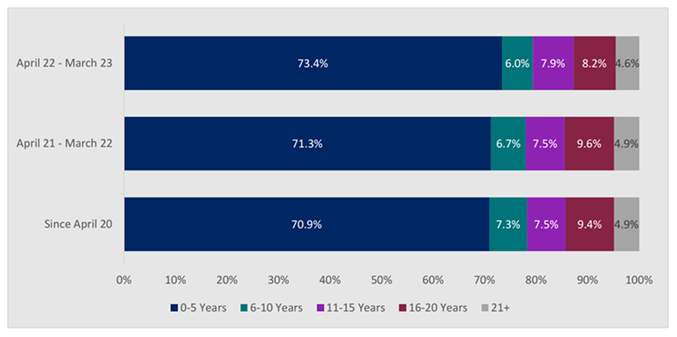The storm of police officer resignations: Part 1
30 August 2023
Polfed News
Much has been made of the Government’s flagship Police Uplift Programme and claims of having recruited 20,000 new police officers across forces in England and Wales
The Police Federation of England and Wales (PFEW) has called out that the Police Uplift Programme (PUP) merely replaces the officers the Government had previously cut and represents a drop in officer numbers in real terms when balanced against population growth since 2010. Fact-checking charity, Full Fact, has revealed that mid-year population estimates indicate that the number of police officers per capita has decreased from around one officer per 381 people in March 2010, to one officer per 404 people in March 2023.
The PUP is also largely responsible for the dramatic drop in PCSO and special constables (SC) numbers as officers moved across from these roles into full-time policing. Arguably, there are still fewer police officers than ever when measured against the population and when taking into account SC and PCSO numbers, not to mention the officers that are doing the work previously carried out by civilian staff whose roles no longer exist.
It is for these reasons that it is more important than ever to ensure retention of officers is afforded top priority. Policing was once a career for life, and concentrated efforts must be made to reinstate it as a viable profession.
In order to achieve this, maintain high officer numbers and ensure forces are capable of providing the public with the service they truly deserve, an in-depth study of the police officer attrition data is required.
The National Police Chiefs’ Council (NPCC) has in July 2022 completed a review of attrition trends, which identified that attrition had been increasing since 2013/14. Analysis had evidenced that over time, voluntary resignations were forming a greater proportion of leavers and it was predicted if trends continued, resignations would overtake retirements as the greatest contribution to officer attrition.
The NPCC has now refreshed the key themes of the analysis with data collected by PUP throughout the 2022/23 financial year. The latest analysis finds that for the first time since resignation rates started increasing in 2013/14, voluntary resignations have contributed more than retirements to the overall attrition rate and the national overall attrition rate for 2022/23 stands at 6.8 per cent.

Source: NPCC
The findings should act as a wake-up call for chief officers of all 43 forces in England and Wales as it highlights poor officer retention and poor data management by forces in recording resignations.
Police officers new in service, defined as less than five years’ service, account for 70 per cent of resignations, and total resignations have increased from two per cent prior to the PUP to 3.2 per cent in the 12 months to March this year.
It is noteworthy the NPCC’s study found 11,035 officers had left forces when PUP’s modelling estimated that at the beginning of 2023 between 10,059 to 11,065 officers would leave forces (including transferees). And yet, chief officers failed to act on the warning signs and ensure the provision of detailed and accurate recordings of the reasons behind officers leaving the forces.
The new research also reveals there remains a “lack of understanding” as to specific reasons for officer resignations, especially in the early years of their careers, and found in a majority of cases reasons given for leaving were recorded as ‘Other’ or ‘Unknown’.

Source: NPCC
The study gives rise to the question that if available evidence clearly pointed to early years being crucial in the fight to improve retention, what steps were taken to contain resignations and why does a poor understanding of reasons for officers leaving remain the norm?
If the aim is to reduce the number of officer resignations, then the focus should be on the first five years of an officers’ service, with the first year of service having the greatest focus. Intervening at this stage and engaging with new recruits to understand their concerns and motivations should be the main priority of chief officers.
It is evident from the data that concentrating on retention efforts for officers with up to five years’ service would provide the highest chance of reducing attrition. It will also protect investments made in their recruitment and training activities.


















